Time as a Commodity: Governance
As we’ve been working with organizational leaders, and hearing stories of the challenges they are facing, time keeps coming up.
Forward-thinking organizations have always evaluated where their time is best spent and, if they have the resources, have applied funds to save time. We can even go back to this Forbes article from 2017 which talks about time saving purchases. Over the past several years, this has been taken to a new level as the balance of potential vs. missed opportunity that each moment holds feels more real than ever. Historically, organizations have always looked at places where they do not have internal capacity or expertise, or where strengths could be aligned to strategy and paid for external assistance or for streamlining services. These time-saving purchases were often driven by special projects, planned services, or point-in-time process improvement efforts.
The dynamic has changed. Now, whether as a result of staffing shortages, changing member needs, the increasing pace of change in the marketplace, or the shift in perspective and approach to living which emerged during the COVID pandemic, organizations and individuals are feeling stretched thin. They are carefully looking at where time is spent and opting out of those things where they do not perceive value or find worthwhile.
As with any challenge, there is always opportunity.
One example can be found as we look at meetings and conferences. Former practices of hosting three- to four-day long annual meetings with the expectation that Board or other volunteer leaders add on one to three days for governance meetings and pre-sessions, are becoming increasingly unrealistic. Attendees at such events are finding it ever more difficult to “step out of their life” for this length of time. When they do attend, they are often less present as they attempt to stay connected to their office and home while at the event. The ubiquity of Zoom meetings and remote work has exacerbated this, so “being away” no longer correlates to being unavailable. This causes us to question whether long, multi-day meetings are still aligned to how members and volunteers value their time.
In parallel, we continue to hear about difficulties recruiting and keeping volunteers at all levels of governance. More than ever, volunteers are highly attentive to the time commitment required – whether for committees, Board service or other areas of contribution – and when the commitment required is not clear, they are less likely to raise their hands. Compounding this are employers, once the steadfast sources of encouraging association involvement, now often deterrents as they prioritize the hours of their employees toward the business rather than service opportunities which take time from the workday. This trend is not new, however it is reaching an inflection point – preventing many organizations from being able to diversify their boards to align to member demographics. How do we rethink our governance structures to create “right” time commitments? What is the most impactful thing someone can do with the time they commit? Does everyone on the board have to commit the same amount of time?
Considering these questions will allow us to take a more nuanced approach to our governing structures. For example, a board could take a threshold approach to contribution. Where each board member is expected to contribute an amount of time that allows for meaningful and impactful service, with additional opportunities for contribution for those who are interested and able to give more. This would also result in the need to define new metrics for volunteerism and an ability to measure whether volunteers have a valuable experience while still fulfilling the commitment of time to the organization. Some great data and thoughts on measures can be found in the new research recently released by the ASAE Foundation on A Holistic Approach to Association Volunteer Management.
As with any challenge, there is always opportunity. To be prepared and to shift our perspectives and structures necessitates open dialogue, careful consideration, and time innovations. Now is the time for our organizations to ask themselves: Where we can create opportunities for impact through involvement that align to time availability? How can we strengthen commitment and loyalty by not basing the structures and impact of volunteerism only through the lens of how much time an individual can commit?
This article written in collaboration with Rhea M. Steele, FASAE, CAE, ODCP.
